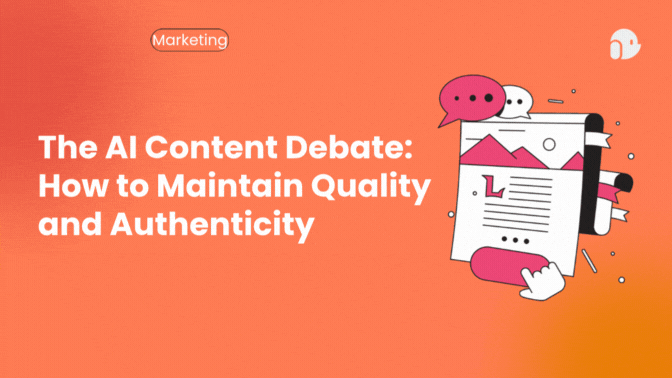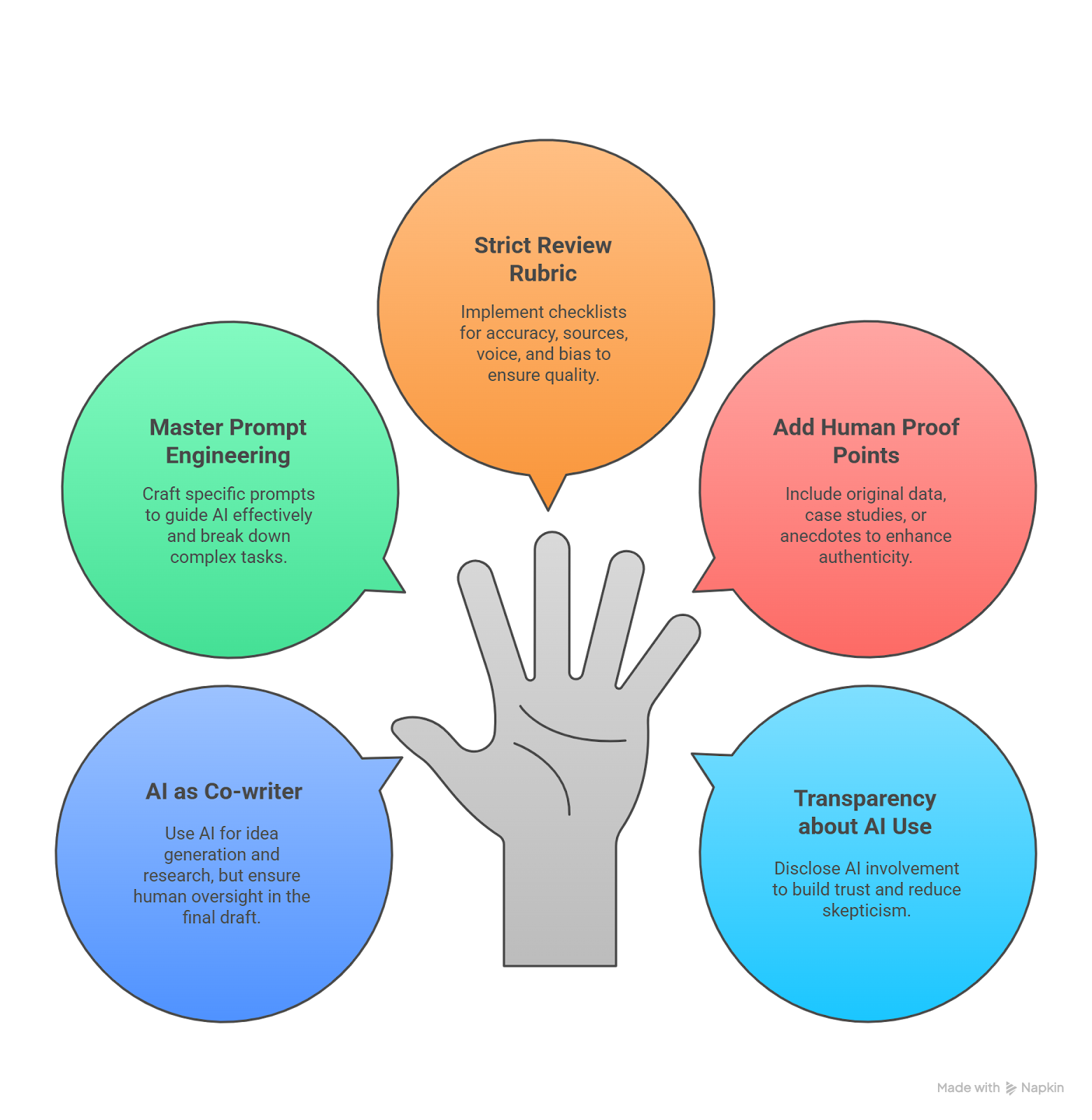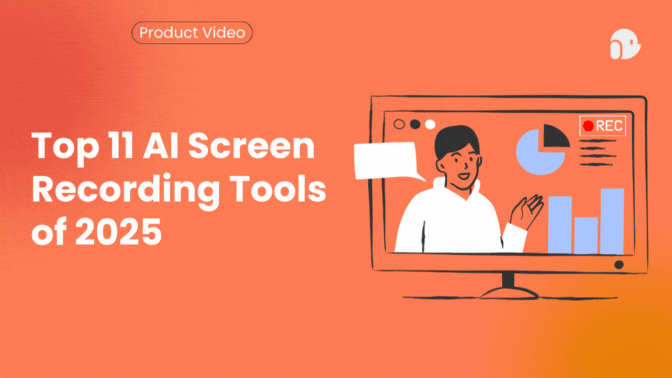The AI Content Debate: How to Maintain Quality and Authenticity.

AI can write a blog in seconds. Sounds like a miracle, right? But let’s be honest: speed isn’t the same as trust. As generative models become more capable, brands face a new dilemma: how to enjoy the productivity wins without compromising credibility. This post walks through the problem, the practical fixes, and why authenticity will always be the true differentiator.
The promise: why teams fell in love with AI
Generative AI brought what many teams had dreamed of: faster drafts, instant ideation, and the ability to scale content with fewer hands. For product marketers and content teams, that means quicker landing pages, more A/B test variants, and a steady stream of SEO-friendly drafts.
But here’s the fine print: AI excels at producing fluent, readable text. It’s brilliant at the glue-work summaries, outlines, and first-pass writing. Where it falters is in the particulars that actually build trust: verifiable facts, lived experience, and an unmistakable human voice.
If you’re looking to pair AI’s efficiency with a real marketing strategy, you’ll love our in-depth guide, The B2B SaaS Marketing Playbook. It dives into how modern SaaS marketers use storytelling, positioning, and automation to scale their growth.
The problem: hallucination, bias, and ‘AI slop’
Three big risks keep editors up at night:
- Hallucination. AI sometimes invents facts, statistics, or sources that never existed. It’ll do it politely and confidently, which makes it dangerous.
- Data bias. Models reflect the biases in their training data, so stereotypes or blind spots can leak into your copy if you’re not careful.
- AI slop. A flood of low-effort, generic content that looks polished but adds little value. Think of it as digital filler, lots of words, not much worth reading.

These problems create the Efficiency Paradox: you save time on drafting, but spend more time fixing errors, confirming sources, and rescuing your brand’s credibility.
Why E‑E‑A‑T matters more than ever
Google’s E‑E‑A‑T framework (Experience, Expertise, Authority, Trust) didn’t disappear when AI arrived. If anything, it became more important. AI can mimic the tone of authority but can’t own real-world experience.
That means publishers who weave verifiable human expertise, case studies, first-person trials, and clear author credentials win in search and in readers’ minds. AI should be the scaffolding; human authorship is the foundation.
Practical playbook: keeping content authentic (and fast)

Here’s a straightforward set of tactics you can apply today.
1. Treat AI like a co‑writer, not a publisher
Use AI for outlines, idea generation, and to speed up research synthesis. But always put a human over the final draft. Ask: Does this article show something a real person did or learned? If the answer’s no, add that material.
2. Master prompt engineering (yes, it’s a real skill)
A vague prompt yields a vague draft. Instead, be specific: define audience, tone, structure, and constraints. Break complex tasks into steps: generate an outline first, then expand section-by-section.
To master AI’s creative potential, check out our article — Unlock Marketing Superpowers: The Essential AI Tools for Product Growth. It covers practical ways to integrate AI tools into product marketing workflows without losing the human touch.
3. Build a strict review rubric
Move reviews off vibes and into checklists. A helpful rubric covers:
- Accuracy: verify all claims and numbers.
- Sources: confirm every citation points to an authoritative, non‑AI source.
- Voice: ensure the piece aligns with brand tone and includes human elements.
- Bias check: read for harmful assumptions or one‑sided perspectives.
4. Add human proof points
Include at least one original data point, a short case study, or a personal anecdote. These tiny additions are disproportionately powerful at signaling authenticity.
5. Be transparent about AI use
If AI materially contributed, especially for realistic media, disclose it. Transparency reduces skepticism and builds trust. A short byline note or an editor’s note is usually enough.
Governance: policies that actually work
Scaling AI responsibly is organizational work. Designate which content types can be AI-assisted, who signs off on final drafts, and how you store audit trails (which model, prompt, and reviewer notes). In short: treat AI like a powerful tool that needs rules.
Looking ahead: watermarking and regulatory winds
Detection tools are getting weaker as models improve, so the industry is experimenting with watermarking and provenance tagging. Expect more policy pressure, too; regulators are increasingly focused on bias, transparency, and misuse. The smartest teams will treat governance as a competitive advantage.
Conclusion — Authenticity as strategy
AI changes how we write, but it doesn’t change why people read. Readers come for insight, real experience, and trust. Use AI to do the heavy lifting, but let human expertise do the finishing. That’s how you keep speed without losing soul.
Ready to experience how effortless authentic demo creation can be? Start your free trial today.
FAQs
Q: Can AI content rank on search engines?
A: Yes—if it delivers value, is accurate, and follows E‑E‑A‑T principles. Search engines reward usefulness, not the method of production.
Q: How do I stop AI hallucinations?
A: Don’t trust unfact-checked output. Cross-check every factual claim with authoritative sources and call out anything you can’t verify.
Q: Do I need to disclose AI use when publishing?
A: Transparency is recommended and sometimes mandatory (especially in academic or sensitive contexts). Even a short disclosure builds credibility.
Q: What content is safe to automate fully?
A: Low-risk productivity tasks, draft outlines, SEO keyword maps, and caption suggestions are often safe to automate. Anything affecting safety, finance, or medical advice should never be published without expert human review.
Q: How do I keep our brand voice consistent with AI tools?
A: Train internal style guides and reuse prompts that encode voice rules. Always have humans edit AI drafts to add nuance and brand-specific phrasing.
Further Reading
Want to explore more on how AI, authenticity, and governance intersect? Here are some carefully chosen, credible resources to expand your understanding:
- Safeguarding Authenticity for Mitigating the Harms of Generative AI — A deep dive into how detection, verification, and explainability can help maintain authenticity in AI-generated content.
- Responsible Artificial Intelligence Governance: A Review — Comprehensive research outlining responsible AI governance frameworks and risk management strategies.
- Evaluating the Efficacy of AI Content Detection Tools — An evidence-based analysis of why AI detection remains inconsistent, especially with advanced models.
- The AI-Authorship Effect: Understanding Authenticity, Moral Disgust, and Consumer Reaction — Explores how consumers emotionally respond to AI-authored content and what that means for marketers.
- Unmasking AI: Informing Authenticity Decisions by Labeling AI-Generated Content — Examines how transparency through labeling can strengthen reader trust and accountability.

Sarah Thompson is a storyteller at heart and Business Developer at PuppyDog.io. She’s passionate about creating meaningful content that connects people with ideas, especially where technology and creativity meet.






